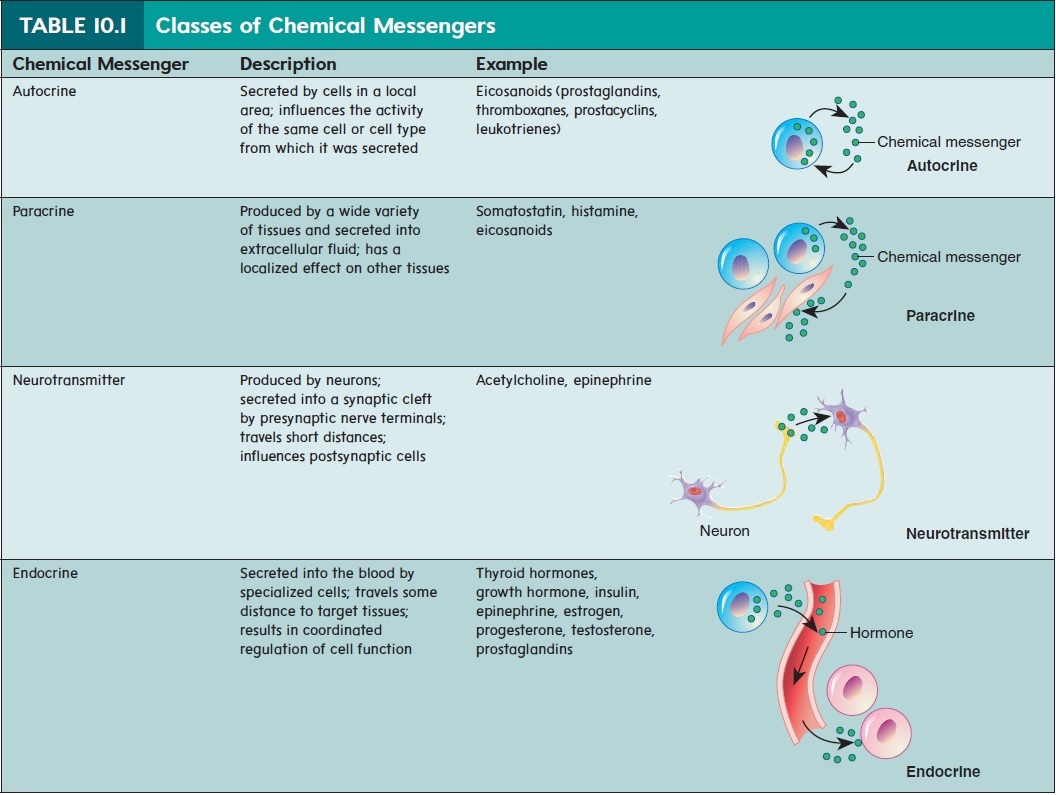Chapter: Essentials of Anatomy and Physiology: Endocrine System
Principles of Chemical Communication
PRINCIPLES OF CHEMICAL COMMUNICATION
The body has a remarkable capacity for maintaining homeostasis despite having to coordinate the activities of over 75 trillion cells. The principal means by which this coordination occurs is through chemical messengers, some produced by the nervous system and oth-ers produced by the endocrine system. Chemical messengers allow cells to communicate with each other to regulate body activities.

Most chemical messengers are produced by a specific collec-tion of cells or by a gland. Recall that a gland is an organ consisting of epithelial cells that specialize in secretion, which is the controlled release of chemicals from a cell. This text identifies four classes of chemical messengers based on the source of the chemical messenger and its mode of transport in the body (table 10.1). In this section, we describe chemical messengers in terms of how they function. But it is important to note that some chemical messengers fall into more than one functional category. For example, prostaglandins are listed in multiple categories because they have diverse functions and cannot be categorized in just one class. Therefore, the study of the endocrine system includes several of the following categories:
1. Autocrine chemical messengers. An autocrine chemicalmessenger stimulates the cell that originally secreted it, and sometimes nearby cells of the same type. Good examples of autocrine chemical messengers are those secreted by white blood cells during an infection. Several types of white blood cells can stimulate their own replication so that the total number of white blood cells increases rapidly .
2. Paracrine chemical messengers. Paracrine chemicalmessengers act locally on nearby cells. These chemical messengers are secreted by one cell type into the extracellular fluid and affect surrounding cells of a different type. An example of a paracrine chemical messenger is histamine, released by certain white blood cells during allergic reactions. Histamine stimulates vasodilation in nearby blood vessels.
3. Neurotransmitters. Neurotransmitters are chemicalmessengers secreted by neurons that activate an adjacent cell, whether it is another neuron, a muscle cell, ora glandular cell. Neurotransmitters are secreted into a synaptic cleft, rather than into the bloodstream. Therefore, in the strictest sense neurotransmitters are paracrine messengers, but for our purposes it is most appropriate to consider them as a separate category.
4. Endocrine chemical messengers. Endocrine chemicalmessengers are secreted into the bloodstream by certain glands and cells, which together constitute the endocrine system. These chemical messengers affect cells that are distant from their source.
Related Topics